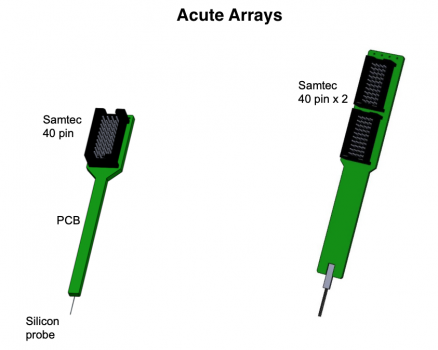
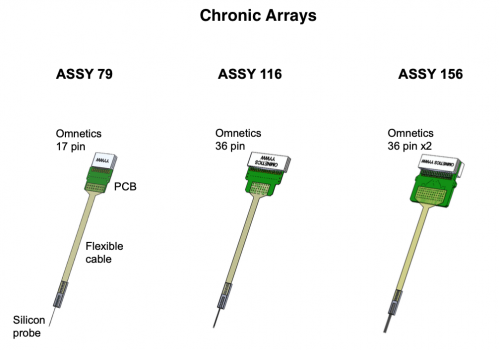
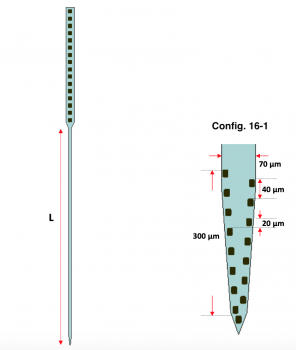
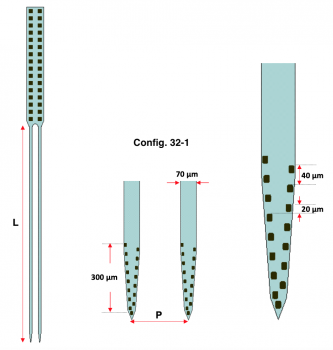
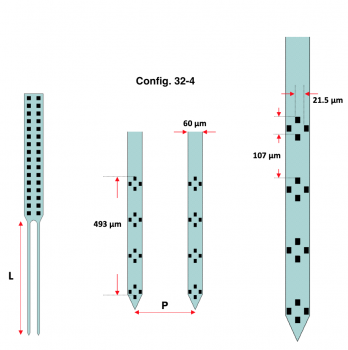
- Description
- Specfications
- Resources
Our laminar high density arrays (LHDA) are optimal for large-scale single units recording, LFP recording which can be combined with optogenetics in freely-behaving or head-fixed animals.
Our acute LHDA can be easily mounted on a standard manipulator and with appropriate cleaning procedure the acute arrays can be reused for 5-15 times which significantly reduce the cost per recording session.
The chronic LHDA are built around a highly flexible cable allowing in-brain adjustment of the probe. We offer standard Omnetics connectors to easily interface with most ephys recording systems and enable highly-scalable, multi-probe implants in freely-behaving animals.
- Array Type: Acute, Chronic.
- Impedance: 100-500K Ohm.
- Channel count: 16/32/64.
- Connector type:
- Acute: Samtec 40-pin, 40-pin x2.
- Chronic: Omnetics 16-ch, 32-ch, 32-ch x2.
- Shank length: 6/9 mm.
- Recording sites configuration: Described in the catalog.
- Adaptor (optional): Samtec 40 pin to Omnectic 16-ch or 32-ch; Samtec 40 pin x2 to Omnetics 32-ch x2.
- Add-on options: Tip sharpening; Adding optic fiber.
